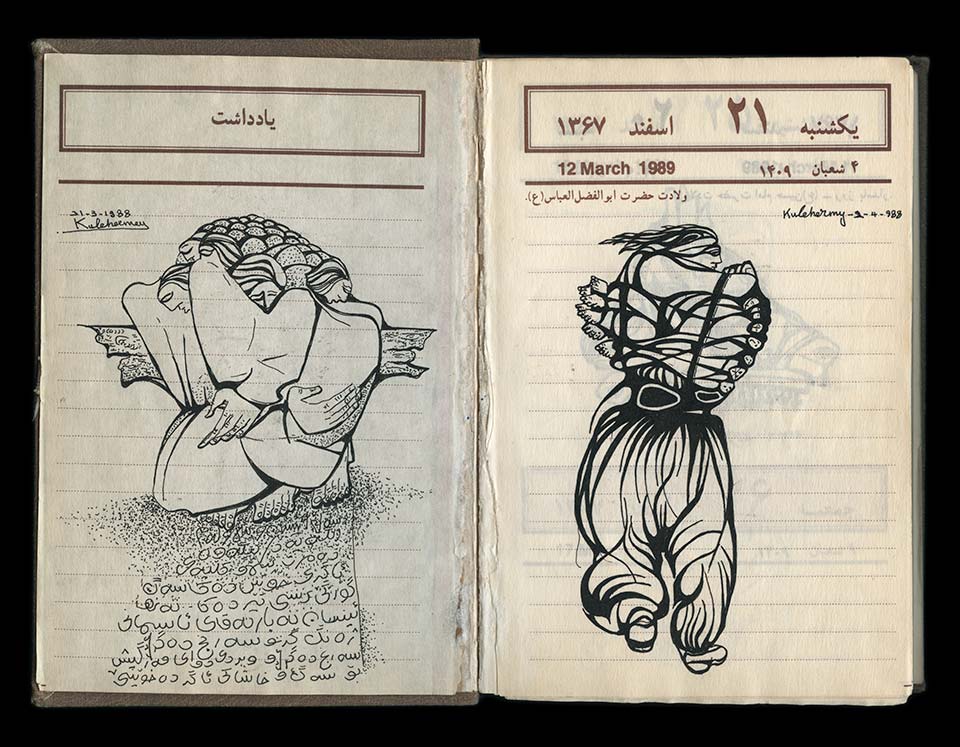Rebwar Saed
Artist’s Notebook, 1988
In 1988, Rebwar Saed was a Peshmerga fighter. His diary covers the period immediately after the Halabja chemical weapons attack, when he was in Shanaxse on the Iraq/Iran border. Rebwar was injured and writes about how he spent the night in a ditch and then searched for food that was safe to eat. He goes on to record the first radio reports of the Halabja attack. Elsewhere in the notebook there are drawings by Rebwar, recording his reaction to the events in Halabja.
22nd March, 1988
Yesterday Newroz passed. Food was getting harder to find every day. That afternoon we were asleep in the bunker. All of a sudden, we heard shooting. They said the planes are here. We could hear screaming. The bunker, which was half ruined, started shaking. Everyone wanted to take shelter inside. I started smelling chemical gas and everyone started to run outside. I put on my mask that I carried with me and started to run towards the higher hills. I didn’t stop until I got to the top. The smell was getting stronger and stronger as the wind blew it towards the top. After a while when we came down, we heard that three Peshmergas had been killed. Slowly everyone was getting red and itchy eyes and getting short of breath. That night the injured were counted at up to 200 people. Some were transported by helicopters and some by cars to Bane’. That night once again we went back to sleep at the old bunker. It still smelled of the chemical gas. Later on that night, most of the international news agencies condemned Iraq for killing 5,000 people in Halabja…
Translation by Ahmad Anvari
Artist’s biography
Rebwar Saed was born in 1962 in Sulaymaniyah, Iraqi Kurdistan. Following the Anfal campaign, Rebwar came to Europe where he formed the ‘Shower of Birds’ Association, which eventually led to the formation of the Modern Art Museum in Sulaymaniyah.
Rebwar studied for his BA and MA in Fine Art at Middlesex University, London, and obtained a PhD for his work analysing Kurdish political and cultural identity from Middlesex University in 2013. His research project was concerned with his artistic practice in ceramics and his efforts to build the Modern Art Museum in Sulaymaniyah. His work is influenced by the political struggle in Kurdistan, and his time as an artist in exile until his return to Kurdistan in 2004.



